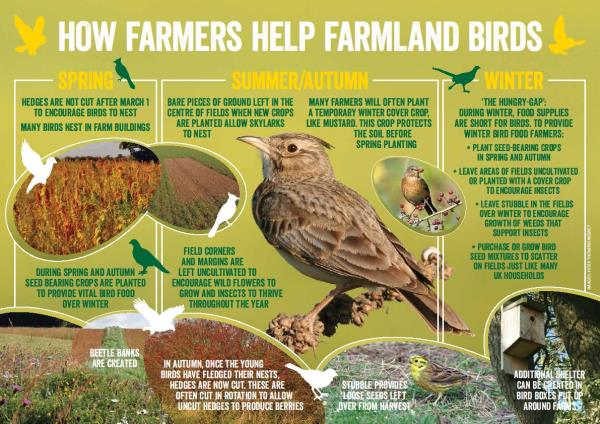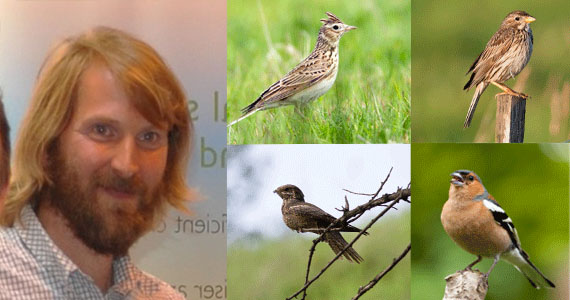Fraser and his partner Rosy farm 320 acres split between two farms near Helmsley & Stokesley in North Yorkshire. The farm is roughly 50:50 grass and arable with the Helmsley farm grassland dominated and Stokesley arable.
Planning for the Big Farmland Bird Count started before Christmas when I was asked by the GWCT to organise one of the bird ID days. In my wisdom I decided to host the event on my own farm not realising the challenge of being chief organiser as well as host brought a whole new meaning to the word pressure. We also had local radio on the farm just to raise the tension even further.
Our day seemed to sell out quickly with a mix of farmers and farm advisors from as far afield as Cumbria. This wasn't just locals wanting a nosy around. The advanced planning resulted in Santa bringing a new weapon to help with the count. The cannon powershot SX60HS can shoot a small bird at 50 paces.
Feeding of birds started into the New Year prompted by the new CS agreement where we have included the winter feeding option The fact 20+ people were coming to see some birds also focused the effort. We have 0.5 of a tonne included in the agreement - I think this is a really good option just to see the birds through the hungry winter gap, a bit like our overdraft while waiting for the BPS this January.
The big day of the training arrived, big sigh of relief in that it was not raining and my friend Chris Tomson from the RSPB was fit and well and able to provide his expert bird ID skills. Chris is a great champion of the work farmers do and has done a huge amount to encourage farmers to manage their land for farmland birds.

Find out more about farming and the environment on our Back British Farming site
I think this is what the BFBC is all about - getting us as farmers to think a little bit more about what wildlife we are sharing our farms with. Managing for our barn owl is a good example of this; through CFE we have done a number of training days on how to manage for barn owls. What is clear is that the topper is not the barn owl's best friend.
My allocated day for the count was Friday 12 February - a crisp, frosty morning with birds singing. Eight tree sparrows in the bag straight away – that was a relief. 30 minutes later I had 18 species, but some checking to do of the photos and books.
Of course this is only a snapshot and over the past couple of years we have kept a record and have about 70 species and counting. The real key to the Big Farmland Bird Count is getting us as farmers to think about what we do during the other 364 days. My objective is to ensure when next year’s count comes around I can increase the number and get some new species. I am hoping the new CS agreement will help getting some wild bird mixes onto the grassland dominated farm.
- Why we're taking 50 tractors into 50 schools - East Midlands press adviser, Alison Pratt
- Big Farmland Bird Count - a farmer's perspective - Yorkshire farmer Richard Bramley
- Blog: Fruit and veg - why don't we eat more? - Lee Abbey, horticulture adviser
- Tesco's commitment must be followed up - Ruth Mason, Chief Food Chain Adviser
- Why Farming Matters penny drops for children - FACE chairman and Open Farm Sunday founder, Ian Pigott OBE
- Farming is a sector worth investing in - NFU chief science and regulatory affairs adviser Dr Helen Ferrier
